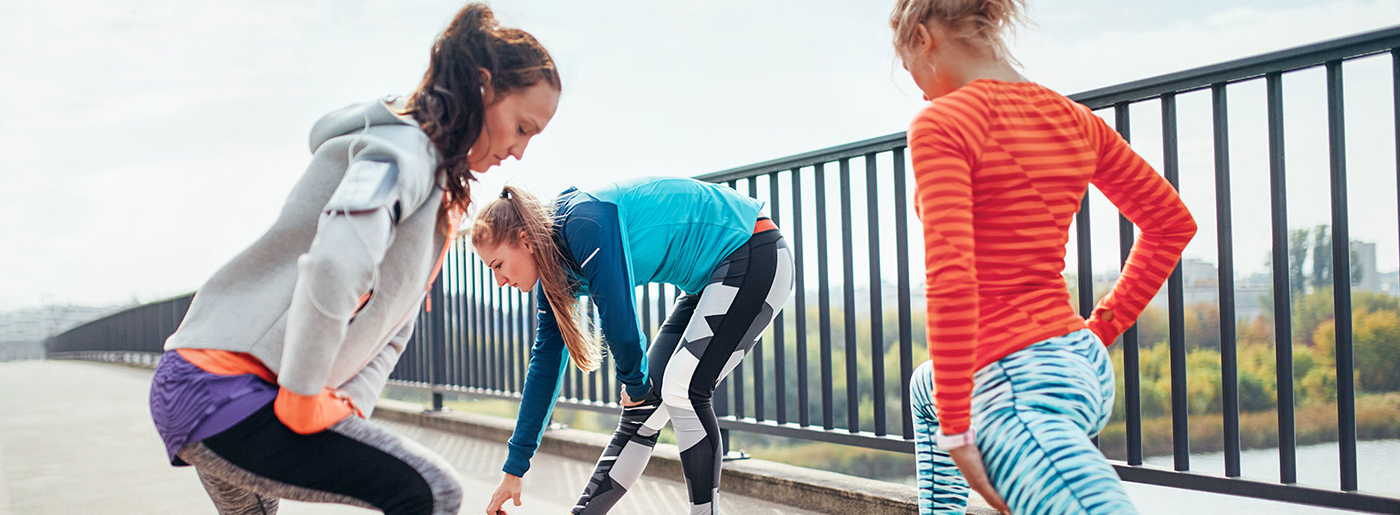‘Treadmill workout’ doesn’t need to be synonymous with ‘boring workout’.
Treadmills are easy to use, provide you with as much customization as you want, and they get the job done fuss-free. But what happens when your workouts get a little boring? Before you start to despise stationary runs, try upping your treadmill workout game.
First thing’s first: Taking your run into The Great Outdoors obviously offers various benefits, but there are some perks to sticking to the machine, too.
“Treadmill running is definitely a different animal from running outdoors. Although the concept is the same, you’re not dealing with the constantly changing elevation, bumps in the sidewalks, or weather when you’re on a treadmill,” says Kelsey Quinn, MS in kinesiology, head track and field/cross country coach at Warner Pacific College in Portland, OR.
Whether you’re running outdoors or on a treadmill, you have to like what you’re doing. Otherwise it’s going to feel like work – and no one wants that.
“If you’re sick and tired of doing the same thing, you’re less likely to head to the gym with a good attitude,” Quinn says. “Find effective workouts that you enjoy, and never slow down in the pursuit of improving your fitness.”
Grab your running shoes, hop on the treadmill, and get ready to fall in love with running all over again thanks to these treadmill workout boosters.
1. Take advantage of your treadmill’s pre-set routes
Running indoors doesn’t mean you can’t get the effect of running outside — thanks to the automatic settings most treadmills have. Whether you choose a preset workout, like hills or even trail running, or manually enter your own, Quinn says having the freedom to pick an exciting new route will keep you running strong.
2. Give interval training a shot
If you’re a fan of high-intensity interval training (HIIT)-style workouts, you’ll especially love applying the highly effective concept to running.
“For those training for a race with a distance of 5k or longer, some easy, longer duration runs will be necessary. But for people wanting to stay in shape or get in shape with no race on the horizon, HIIT is a great option for the treadmill,” Quinn says.
Try it: HIIT treadmill workout
- 5 to 10 minute warm-up (slow jog pace or heart rate zones 1–2)
- 6 x 30-second sprints (1.5–3.0 MPH faster than your comfortable jog pace; zones 4–5)
- 90-second slow recovery jog between the sprints (zone 3)
- Cooldown
OR
- 5 to 10 minute warm-up (slow jog pace or heart rate zones 1–2)
- 8 x 10-second sprints (as fast as you can go; zone 5)
- 45 seconds of walking between each sprint
- Cooldown

3. Go for distance rather than time
If most of your treadmill workouts are spent looking at how much time you have left, you’re not alone. But switching your focus to a certain distance rather than how long you’re running for can really improve your running and help you run faster, all while helping the seconds fly by.
“The more consistently you run at a pace, the more your body adapts to that pace and allows you to continue running at faster speeds,” Quinn says.
Try it: Go the distance treadmill workout
- 5 to 10 minute warm-up (comfortable jog)
- Increase speed 1.0 MPH for .10 of a mile
- Decrease back to jogging speed for .10 of a mile
- Increase 1.0 MPH for .15 of a mile
- Decrease back to jogging speed for .15 of a mile
- Increase 1.0 MPH for .2 of a mile
- Decrease back to jogging speed for .2 of a mile
- Increase 1.0 MPH for .15 of a mile
- Decrease back to jogging speed for .15 of a mile
- Increase speed 1.0 MPH for .10 of a mile
- Decrease back to jogging speed for .10 of a mile
- Cooldown for 5 to 10 minutes (comfortable jog)
4. Experiment with the incline
Running on an incline on the treadmill is similar to running hills, and you guessed it — both have some great body-boosting benefits.
“Inclines activate your glute and hamstring muscles more than running on a flat surface. The higher you set the incline, the more your hip flexes and extends, requiring your glutes to power you up the incline,” Quinn says.
Try it: Incline treadmill workout
- 5 to 10 minute warm-up (slow jog pace)
- Run 1 minute at 0.5% incline
- Run 1 minute at 2% incline
- Run 1 minute at 0.5% incline
- Run 1 minute at 3% incline
- Run 1 minute at 0.5% incline
- Run 1 minute at 4% incline
- Run 1 minute at 0.5% incline
- Run 1 minute at 5% incline
- Repeat in reverse
- Cooldown 5 to 10 minutes
5. Get your monster walk on
You’ve probably seen people doing side gallops on the treadmill at the gym, but Quinn says those are safest to perform on the ground. Instead, get some lateral movement with monster walks.
“Monster walks are a great exercise for your gluteus medius muscles, which keep your knees from falling in toward each other during running, squats, walking, and lunges,” Quinn says.
Try it: Monster walks on the treadmill
- Set the treadmill to a very slow setting (1.0–1.5 MPH to start)
- Perform a quarter squat facing sideways on the treadmill, with your feet shoulder-width apart
- As the treadmill moves, step your front foot out to the side, widening your stance.
- Then bring your back foot back to the shoulder distance position.
- Keep your feet facing in the same direction at all times, and don’t let your toes turn toward the front of the treadmill
- Do this for 15–20 reps, then switch so you’re facing the opposite side and do another 15–20 reps
6. Lunge it out
Lunges are always a perfect way to boost your workout, so why not hit two birds with one stone and incorporate them right into your treadmill routine?
“Lunges are a great lower body exercise, as they activate all major leg muscles. But unfortunately, anyone with long legs or who’s tall might have to stick to lunges off the treadmill due to the length of the machine,” Quinn says.
Try it: Treadmill lunges
- Start the treadmill very slow at 0.5 MPH (you can always increase it once you’re comfortable) and wait to lunge until the treadmill moves you back a bit
- Lunge forward, bringing your back foot up to meet your front foot before lunging again
“If you decide to try out treadmill lunges, just remember it’s important to maintain a rhythm and not suddenly slow down, as you could slip off the back of the treadmill,” Quinn says. “Just to be safe, always have the safety clip on while you’re doing these exercises.”
7. Take your butt kicks up a level
Everyone’s favorite way to run in grade school gym class just got a lot more exciting, especially if you have tight quads. Make your workout more fun and get some much-needed muscle release by incorporating some butt kicks into your routine.
Try it: Treadmill butt kicks
- Start with the treadmill at 3.0 MPH, then kick your heel up toward your butt, followed immediately by your other foot doing the same
- Continue for 20–30 seconds, then take a break
“Just don’t kick back with your foot like you’re trying to reach behind you,” Quinn says. “Kick straight up toward the area right under your butt cheek.”
8. Up your skipping skills
If butt kicks are grade school, skipping is definitely middle school. Except this time you’re not chasing kids you had crushes on. It might feel funny, but adding a little light skipping into your treadmill workout is a great way to boost your heart rate without it feeling like you’re working any harder. In fact, you might actually have fun.
9. Do a ladder workout
If you really want to switch things up, try a ladder workout. Not sure what that is? Basically it’s a type of interval workout where you go “up” the ladder then back “down.” With so much going on mentally, the time will fly by.
Try it: Ladder workout
Do the following sprints with a 1-minute jog or walk between each:
- 5 to 10 minute warm-up (slow jog pace)
- 10-second sprint (as fast as possible)
- 20-second sprint (as fast as possible)
- 30-second sprint (as fast as possible)
- 45-second sprint (~0.5 MPH slower than first sprints)
- 60-second sprint (~0.5-1.0 MPH slower than first sprints)
- 45-second sprint (~0.5 MPH slower than first sprints)
- 30-second sprint (as fast as possible)
- 20-second sprint (as fast as possible)
- 10-second sprint (as fast as possible)
If you liked this post, don’t forget to share so that others can find it, too.
Or give it a thumbs up!
I like this article
Please note that the information provided in the Polar Blog articles cannot replace individual advice from health professionals. Please consult your physician before starting a new fitness program.





